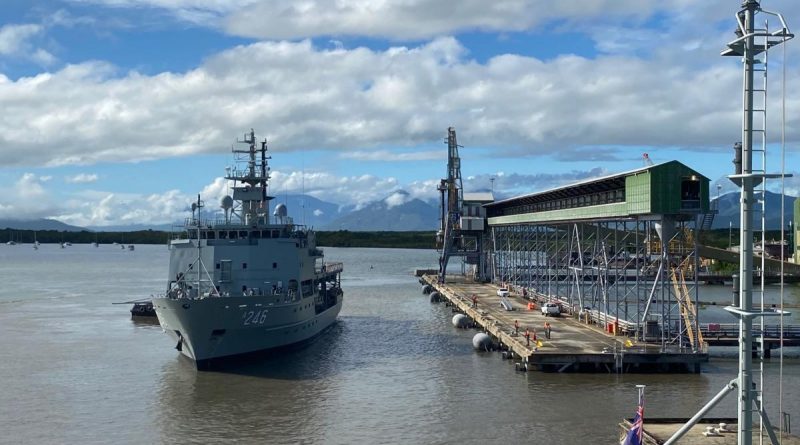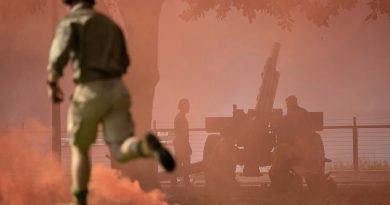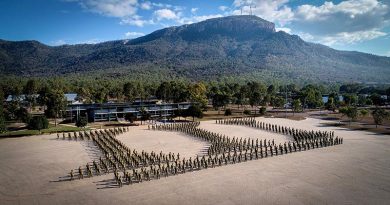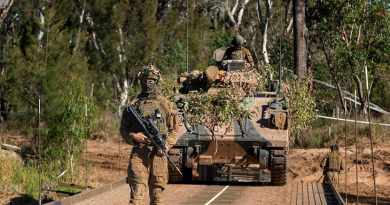Survey work to make navigation safer

HMAS Melville has returned to her home port of Cairns after a six-week deployment completing survey work in poorly surveyed waters of the Bass Strait.
CAPTION: HMAS Melville departing her home port of Cairns to conduct hydrographic survey work in the Bass Strait.
The voyage to the Bass Strait was the first time in 14 years Melville has travelled so far south.
Able Seaman Ryan Ball said the voyage was a rare opportunity to visit a cooler climate, with the ship’s company more accustomed to tropical north Queensland and the Pacific Islands.
“For some people it’s too cold, but I loved it,” Able Seaman Bell said.
“It made entering machinery spaces easier and there were no complaints when we shut down air conditioning for maintenance.”
The survey work was conducted in late February, with the ship’s company using bathymetric sounding to develop charts, which will help other mariners from around the world safely navigate the waters.
The ship’s two survey motor boats (SMBs) Meda and Duyfken were deployed regularly to collect information in depths too shallow for Melville to enter.
The military survey team also took the opportunity to deploy a bottom-mounted tide gauge. This instrument will be recovered at a later date and will provide vital information on the tides in the area.
The notorious rough seas and strong winds of the Bass Strait were ever present during the survey, but Melville pushed through.
This was Lieutenant Josh Callan’s first survey as a maritime geospatial officer – hydrography.
“And what a way to start,” Lieutenant Callan said.
“The combination of safely driving the ship into poorly surveyed waters and collecting and processing data in such challenging environment was very rewarding.”
HMAS Melville and its complement of 65 personnel set sail from Cairns in mid-February after completing the unit readiness work-up and evaluation in January and early February.
The ship’s company was put through a series of tests in their operating capability as hydrographic surveyors, while also proving the ability to face all potential challenges at sea, from fire and flood to a toxic hazard incident whilst simultaneously conducting survey operations.
The crew achieved Sea-Release Board Three.
Able Seaman Shannae Fiddyment said the work-up and evaluation period was challenging but rewarding.
“The hydrographic department conducted many survey evolutions including SMB and light utility boat soundings, shore party activities and rapid environmental assessment operations,” Able Seaman Fiddyment said.
“A highlight for me was SMB soundings on the still waters of Dunk Island.”

CAPTION: Lieutenant Joshua Callan and Leading Seaman Nicholas Rowe guide the crane hook into HMAS Melville’s survey motor boat for a recovery.
During the transit south, Melville’s crew competed the aviation sea safety assessment (ASSA) to prove their ability to conduct vertical replenishments and transfer operations safely at sea.
The crews practised landing stores on the flight deck, while the ship’s crew got the opportunity to employ their training in communications, marshalling, flight deck team operations and internal damage control when operating with helicopters.
Melville conducted a port visit to Melbourne during the six-week deployment, the first Navy ship to do so in 12 months due to COVID-19 travel restrictions.
The ship will now undergo a short maintenance period alongside HMAS Cairns before Sea Training Group – North comes on board for work-ups and evaluations prior to the next survey task in the Torres Strait.
CAPTION: HMAS Melville’s survey motor boat conducts data collection in shallow waters during a deployment in the Bass Strait.
.
.

.
.





